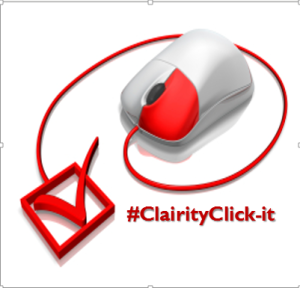10 Common Nonprofit Major Gift Asking Mistakes to Avoid
 When you’re not aware you’re making a mistake, it’s hard to avoid it.
When you’re not aware you’re making a mistake, it’s hard to avoid it.
So let’s get curious. I’m going to ask you to close your eyes for a minute to imagine a donor you’ve been wanting to ask for a major gift. I’m going to ask you to visualize a space where you’re meeting. Put them in your office, their home, a café or even a Zoom screen. Choose what’s comfortable, and where you think you’d be most likely to meet with this donor within the next month or so.
Okay… do you have your donor and your meeting space in mind? Excellent!
Now, before closing your eyes, commit to visualizing these four things:
- You’re in the room together.
- You smile. They smile back.
- Someone else is in the room with both of you. Imagine you brought them with you. Who are they, and how does it feel having them there to support you?
- Bolstered by the smiles and good company, what do you say to open the conversation?
Okay, are you ready to close your eyes? Even if this feels a little weird, why not give it a try?
EXERCISE: You can do this by yourself, but it works better if you do it in a pair. Find a co-worker, friend or family member to prompt you to close your eyes and take a few deep breaths. Notice if you’re holding tension anywhere in your body. Relax those areas (forehead; neck; shoulders; hands; belly; thighs; calves; feet). Now have them ask you the following questions:
(1) Pick a donor to meet with.
(2) Pick your meeting space.
(3) Pick an additional person to support you in the room (e.g., program director; subject matter expert; volunteer; executive director; board member; other donor). Describe who they are, and how it feels having them there.
(4) Open the conversation. What are you saying to them? What are they saying back? What’s their body language? Are their eyes lighting up? Are they smiling? Leaning forward? Play this scenario out just a bit, until you get to a place of comfort or discomfort.
Then open your eyes.
What did that feel like?
What felt comfortable to you? Uncomfortable? Did it feel more comfortable and pleasant than you may have imagined?
Smiling people, committed to the same cause, hanging out in a comfortable space together…. from such a space can come many good things.
- What did you say to open the conversation?
- How did that feel?
- If it felt good, why?
- If it didn’t feel good, why?
Take a few minutes to journal some answers to those questions. I guarantee this will help you shift the energy for the next time you move into this space – in real time – with a donor.
A Mistake is Just a Misjudgment
It’s not fatal; you can correct it. But first you have to recognize it happened!
Mistakes in major donor conversations generally arise when you don’t know enough about the donor, or vice-versa. That’s why there are two kinds of major donor visits:


 Early in my career I received a piece of fundraising advice that has stuck with me to this day:
Early in my career I received a piece of fundraising advice that has stuck with me to this day:

 Want your donors to sustain you? Then you can’t consume them in five minutes.
Want your donors to sustain you? Then you can’t consume them in five minutes.
 Here is some wisdom gleaned from many decades of personal nonprofit work.
Here is some wisdom gleaned from many decades of personal nonprofit work.

 Have you started working on your annual appeal and year-end fundraising plan?
Have you started working on your annual appeal and year-end fundraising plan?

 I had a fundraising post all ready to launch today, but I just couldn’t do it.
I had a fundraising post all ready to launch today, but I just couldn’t do it.
 The major gift journey is a synergistic one. You see, it’s both your journey and your donor’s journey.
The major gift journey is a synergistic one. You see, it’s both your journey and your donor’s journey.





 The modern model is more like a vortex — an energized circle where everyone is equal. People move in and out as needed, and your job is to keep the energy flowing.
The modern model is more like a vortex — an energized circle where everyone is equal. People move in and out as needed, and your job is to keep the energy flowing.
 How often have you heard someone say “I hate fundraising; I’ll do anything else,” or something along those lines?
How often have you heard someone say “I hate fundraising; I’ll do anything else,” or something along those lines?
 When you’re not aware you’re making a mistake, it’s hard to avoid it.
When you’re not aware you’re making a mistake, it’s hard to avoid it.



 People are wired for stories
People are wired for stories

 The major gift journey is a synergistic one. You see, it’s both your journey and your donor’s journey.
The major gift journey is a synergistic one. You see, it’s both your journey and your donor’s journey.




 The inimitable Seth Godin recently posted some wisdom I want to share, because it applies directly to how you must ‘sell’ your nonprofit if you hope to inspire folks to join with you to solve the problems you address.
The inimitable Seth Godin recently posted some wisdom I want to share, because it applies directly to how you must ‘sell’ your nonprofit if you hope to inspire folks to join with you to solve the problems you address.















